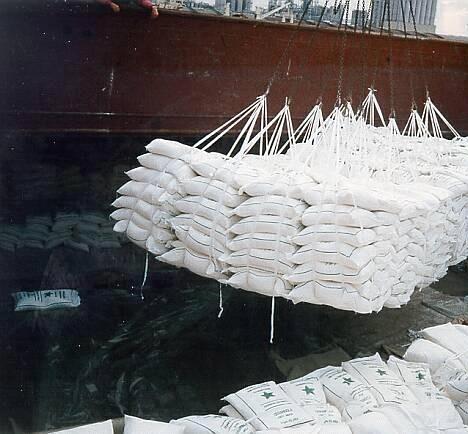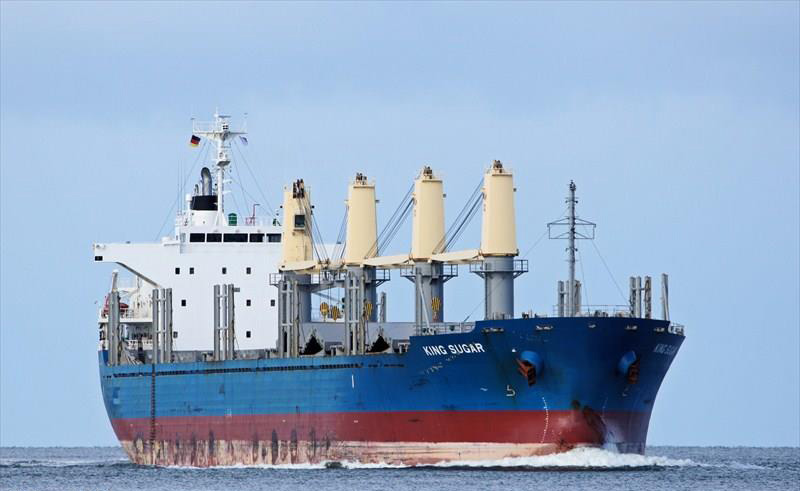Important Information
We provide sugar in small and large quantities. However, for any transaction we have certain requirements and/or pre-requisites that every buyer and/or agent need to be aware of:
1) We DO NOT provide Proof of Past Performance (POPP) documents.
2) We DO NOT provide Proof of Product (POP) before receiving the payment instrument.
3) We DO NOT provide Proof of Product Availability before receiving the payment instrument.
4) We DO NOT provide Performance Bond (PB) upfront.
5) We DO NOT work to Buyer's terms and/or procedures.
Note: Our prices are based on real production and shipping costs. The only way for a buyer to reduce the cost of the sugar is to issue an SBLC that carries the value for additional months than the standard quantity requested, which is one month.
Payment Terms and Procedures
We do require a payment instrument issued or confirmed by a Top 50 World Bank. To see a list of the Top 50 World Banks - click here.
VESSEL LOADS (Icumsa 45 and Icumsa 600-1200):
MIN. 12,500 MT
*TERMS AND PROCEDURES BELOW ARE FOR VESSEL LOADS. FOR CONTAINER LOADS PLEASE CLICK HERE.
Spot
Payment terms
SBLC (Stand-by Letter of Credit) via MT760 as guarantee for SPOT value and TT (MT103) as payment per shipment at Port of Loading
POP (MT799)
SBLC from Top 50 Bank or Confirmed by Top 50 bank
Procedures
1. Buyer issues LOI
2. Seller issues SCO
3. Buyer issues ICPO with full banking details.
4. The Seller will present the draft contract for acceptance by the Buyer.
5. Buyer returns the draft contract by exchanging it by facsimile or Email attachment, duly signed and sealed, within 3 working days. The draft copy will be deemed legal until hard copies are exchanged.
6. Buyer’s Bank issues SBLC using SWIFT MT760 for SPOT value, open for full contract period, to be received at Seller’s Bank within 3 (three) working days.
7. Seller’s Bank issues to Buyer’s Bank POP (SWIFT MT799).
8. Shipping commences as per schedule.
Annual Contract
Payment terms
SBLC (Stand-by Letter of Credit) via MT760 as guarantee for ONE month's value and TT (MT103) as payment per shipment at Port of Loading
PB 2% (MT760) + POP (MT799)
SBLC from Top 50 Bank or Confirmed by Top 50 bank
Procedures
1. Buyer issues LOI
2. Seller issues SCO
3. Buyer issues ICPO with full banking details.
4. The Seller will present the draft contract for acceptance by the Buyer.
5. Buyer returns the draft contract by exchanging it by facsimile or Email attachment, duly signed and sealed, within 3 working days. The draft copy will be deemed legal until hard copies are exchanged.
6. Buyer’s Bank issues SBLC using SWIFT MT760 for ONE month’s value, open for full contract period, to be received at Seller’s Bank within 3 (three) working days.
7. Seller’s Bank issues to Buyer’s Bank POP (SWIFT MT799) and 2% PB (SWIFT MT760) of one month’s value.
8. Shipping commences as per schedule.
Download our templates: LOI or ICPO
CONTAINER LOADS (Icumsa 45):
MIN. 1,000 MT
MAX: 5,000 MT
*TERMS AND PROCEDURES BELOW ARE FOR CONTAINER LOADS. FOR VESSEL LOADS PLEASE CLICK HERE.
Spot
Payment terms
100% TT (MT103) in advance within 3 days after signing contract
POP (MT799)
Procedures
1. Buyer issues LOI
2. Seller issues SCO
3. Buyer issues ICPO with full banking details.
4. The Seller will present the draft contract for acceptance by the Buyer.
5. Buyer returns the draft contract by exchanging it by facsimile or Email attachment, duly signed and sealed, within 3 working days. The draft copy will be deemed legal until hard copies are exchanged.
6. Buyer’s Bank issues TT (MT103) for 100% of the SPOT value to be received at Seller’s Bank within 3 (three) working days.
7. Seller's Bank issues to Buyer's Bank POP (SWIFT MT799).
8. Containers are loaded and shipping documents are presented to Buyer.
Annual Contract
Payment terms
100% TT (MT103) of ONE month's value in advance within 3 days after signing contract
POP (MT799)
Procedures
1. Buyer issues LOI
2. Seller issues SCO
3. Buyer issues ICPO with full banking details.
4. The Seller will present the draft contract for acceptance by the Buyer.
5. Buyer returns the draft contract by exchanging it by facsimile or Email attachment, duly signed and sealed, within 3 working days. The draft copy will be deemed legal until hard copies are exchanged.
6. Buyer’s Bank issues TT (MT103) for 100% of ONE month's value to be received at Seller’s Bank within 3 (three) working days.
7. Seller's Bank issues to Buyer's Bank POP (SWIFT MT799).
8. Containers are loaded and shipping documents are presented to Buyer.
-
Steps 6-7 are repeated every month until end of contract
Download our templates: LOI or ICPO
Delivery Period
Sugar ICUMSA 45 in large quantities stored in ports or warehouses does not exist. The cost of storing sugar ICUMSA 45 produced, bagged and stored in the port is very high, which makes it unfeasible. Therefore, unless the order is for sugar already in the warehouse, the buyer is buying future production. That production starts after the financial instrument is in place. Therefore no POP can be issued before the time of loading.
Depending on the quantity, loading usually will begin 45-55 days from the day the financial instrument is accepted by our bank. It takes that long to harvest the cane, bring it to the mill, produce the sugar, have a loading berth assigned, ship the sugar to the port, have it inspected and begin loading.
Shipping Documentation
When sugar is shipped, there are many documents which accompany it. Some of these documents are required in order for the seller to be paid, others are required in order that the shipment can be imported into a foreign country, and still others provide assurances that the sugar meets the requirements set out in the contract, has been properly handled, and is being shipped aboard a seaworthy vessel. This is a list of the most commonly provided types of shipping documentation, along with explanations of their function.
*Note: Not all shipping documentation may apply to this commodity. A list of the full documentation will be listed on the contract.
Signed Commercial Invoice
A commercial invoice is made out from the seller to the buyer. It details the specifications of the product being shipped and the total cost of the shipment. This invoice is normally required in order for the seller to receive payment under the terms of a letter of credit, and functions as a tax invoice for the buyer.
Clean on Board Bill of Lading
A bill of lading is a document which is issued by a carrier or transporter. The document confirms the specifications of the shipment received, the port where it was loaded, and the destination port. It also outlines the terms of carriage. Bills of lading can be negotiable or non negotiable. A negotiable bill of lading enables the holder of the bill of lading to change the destination port of the shipment. A non negotiable bill of lading means that the shipment will be delivered to a specified port, and this port cannot be changed.
Packing List
A packing list is simply a document which outlines the quantity and type of product shipped. This document is normally very detailed. In order for the seller to obtain payment it is important that the packing list is identical to the terms of the contract and those set out in the letter of credit.
SGS Certificate of Weight Grade, Quality, and Condition
SGS is an international independent inspection company which will inspect the sugar shipment before it leaves the port and verify that the sugar is of the correct weight, grade, quality, and condition as stated in the bill of lading, packing list, and contract. If all is in order, they will issue an SGS certificate which states that the sugar met certain standards when it was shipped.
Certificate of Origin
A certificate of origin states where the sugar is from. This is essential when importing sugar from one country to another. The certificate of origin is often issued by the exporter, although it can sometimes be issued by a government agency.
Phytosanitary Certificate
A phytosanitary certificate states that the shipment meets the phytosanitary requirements which are in place in the country it is being exported to. Phytosanitary certificates are always required for plants and plant products, as these can represent a potential hazard to the ecosystem of the country to which they are being exported.
Loading / Stowage Supervision Certificate
A loading /stowage supervision certificate is offered by SGS, and covers the following elements of loading:
*A thorough check of the overal appearance of the cargo and any packaging.
*Verification that all sugar is being loaded by checking the number and size of containers against the contract.
*Ensuring that proper handling procedures are followed during loading.
*Ensuring that the transport medium is clean and sanitary.
*Ensuring that the shipment is adequately stowed and secured, and that it is protected from the elements.
The loading/stowage certificate provides the buyer with peace of mind that not only was the sugar in good condition when it left the mill or warehouse, but that it was handled properly prior to shipping. It is also important from the seller’s perspective that a loading/stowage certificate be obtained as it is additional proof in case of mishap in transit that all due care was taken to ensure successful delivery to the buyer.
Certificate of Radiation
A certificate of radiation states that the shipment is within internationally acceptable radiation levels.
Crop Certificate
A crop certificate states the crop from which the sugar was produced. This allows the sugar to be traced right back to the exact point of its origin where it was grown.
Shipping Company Statement
A shipping company statement relates to the ship aboard which the sugar will travel. It normally states that the ship is of a certain age, and that it is well maintained. This document is designed to provide assurance that the vessel is sea worthy.
*Templates available upon request: NCNDA & IMFPA
.png)


